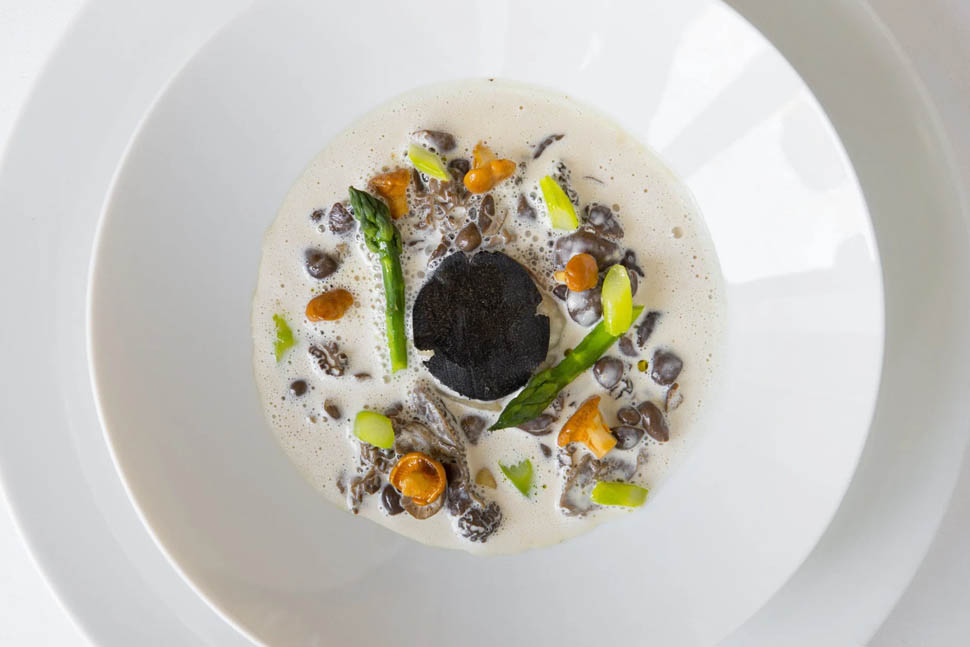Cover photo: @MaxPPP
From the culinary revolution to lean cooking
Guérard was a giant of 20th-century gastronomy. Together with Paul Bocuse, Alain Chapel, and the Troisgros brothers, he revolutionized French cuisine, creating nouvelle cuisine: fresh, high-quality ingredients, quick cooking, lightness, simplicity, and elegance, far from the excesses of classic cuisine. His career began as a pastry chef at the prestigious Hotel Crillon in Paris, but the turning point came in 1965 when he bought a small bistro in Asnières. He later moved to Eugénie-les-Bains, in the Landes region, where he created Les Prés d’Eugénie, a temple of high-end dietetic cuisine. A restaurant-hotel that earned three Michelin stars and kept them for almost half a century. His book La nouvelle cuisine de la minceur (The New Cuisine of Slenderness) was a worldwide bestseller and earned him the cover of Time magazine.
 Getty ImagesIs this the end of haute cuisine as we know it?
Getty ImagesIs this the end of haute cuisine as we know it?
In his posthumous book reviewed here by El País, Guérard lucidly tackles the thorniest issue: does haute cuisine still make sense in its current form? The question is anything but rhetorical. Tasting menus, with their dozens of courses, lengthy explanations, and astronomical prices, are becoming an increasingly elitist experience, far removed from real life. “It is legitimate to ask whether the future of haute cuisine still lies in serving exhausting and extremely expensive experiences to an increasingly limited audience,” he writes. And his answer is clear: a paradigm shift is needed.
The lost value of everyday cooking
One of the central themes of the book is the loss of everyday cooking, which is simple, tasty, and accessible. Guérard denounces an excessive concentration of talent and creativity in luxury restaurants, to the detriment of “everyday” dining. And here comes the comparison with Italy, which he openly praises: “Italians have managed to preserve a high-quality popular cuisine. Pizza and pasta have succeeded where the French sandwich has failed. We French, perhaps out of pride, have moved away from the idea of offering simple but well-made dishes.”
 Against the obsession for stars
Against the obsession for stars
Guérard also addresses the obsession with Michelin stars, which often becomes a trap for chefs and restaurateurs. “For years, it was believed that two or three stars were a guarantee of economic success. But today, this model is in crisis.” His proposal? Embrace more flexible models, such as quality brasseries, which are able to combine good profits with an accessible gastronomic offering.
Innovate to survive
Guérard has always believed in the need to renew oneself, not only creatively, but also economically. “To continue to exist, we must surpass ourselves, but also reinvent economic models,” he says. It was precisely this vision that gave rise to alternative concepts such as La Ferme aux Grives, a more rustic but high-quality offering designed for a wider audience. His idea was clear: to make gastronomic excellence compatible with real life.
 The lightness revolution
The lightness revolution
Another pioneering aspect of Guérard’s thinking concerned healthy cooking. But be careful: we’re not talking about deprivation or bland dishes. His goal was to combine health and pleasure, nutritional balance and taste. “It’s much more complex than just worrying about calories,” he explained. Some of his tricks? Using concentrated milk instead of butter for béarnaise sauce, or aromatic broths to lighten vinaigrettes. Simple but ingenious techniques that are too often ignored by other chefs.
A legacy written in black and white
Memoria della cucina francese is more than a book: it is a manifesto. A call to responsibility, sobriety, and the beauty of simplicity. Guérard does not condemn haute cuisine, but invites us to rethink it. To bring it back down to earth, to make it human, understandable, and sustainable again. At a time when fine dining seems to be increasingly chasing the concept of performance, his message resonates as a return to meaning: “Every dish must nourish the body, but also common sense.”


